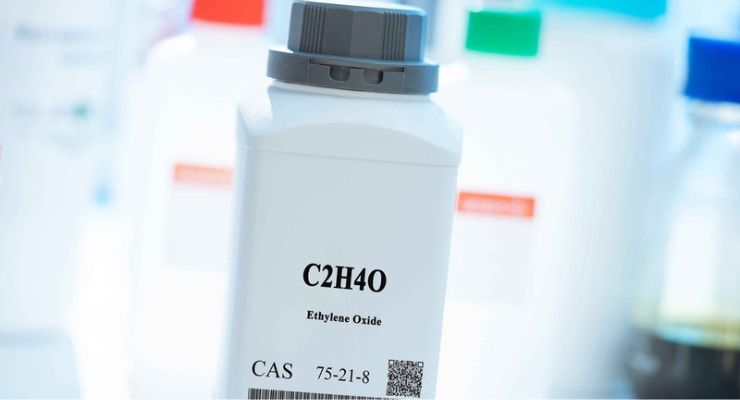Timeline Mystery for Updated EtO Rules

Three years and counting.
Thirty-six months (give or take a few) filled with controversy, legal battles, protests, anxiety, anger, and bewilderment—with likely more to come.
In government time, three years is har-dly worth questioning. It did, after all, take U.S. lawmakers 32 years to update Clean Air Act standards and three presidential administrations (14-plus years) to devise a pandemic response plan.
Still, Uncle Sam’s latest indolence is undoubtedly exasperating for the healthcare industry, which has been waiting for new ethylene oxide (EtO) emissions rules from the U.S. Environmental Protection Agency (EPA) since late 2019.
The EPA has been reviewing its ethy-lene oxide emissions standards since 2018 to reduce atmospheric EtO levels in communities with sterilization or chemical manufacturing plants. The updated rules were first slated for release in spring 2020 but COVID-19 (understandably) jettisoned that plan.
There have been murmurs about the updated standards for the past two years, but none have come to fruition. Each rumored “deadline” passed without mention, and was replaced by new, albeit ambiguous, target periods: Spring 2020 stretched into spring 2021, which then switched to early 2022, followed by August 2022.
It remains to be seen whether the healthcare industry’s EtO purgatory ends this year. The EPA’s proposed amendments are currently with the Office of Management and Budget for review, but heaven only knows how long that assessment might take.
Regardless of the new timeline, the delay has only galvanized the battle over EtO emissions. Deemed a human carcinogen by the EPA in December 2016, EtO has been linked to various cancers (via long-term exposure), including breast, Non-Hodgkin lymphoma, myeloma, and lymphocytic leukemia.
Such serious health consequences have triggered countless protests and lawsuits over the last half-dozen years from residents living near EtO-emitting chemical manufacturing and sterilization plants. More than 700 EtO-related personal injury and medical monitoring claims are pending in U.S. courts, many of which likely were bolstered by a $360 million judgement last fall against a medical device sterilization provider, according to Bloomberg Law.
Among the scads of claims are more than 100 from Cobb County, Georgia, residents living near a medical device sterilization plant in Smyrna. The residents are suing sterilization provider Sterigenics (a Sotera Health company), which is paying $408 million to settle more than 870 EtO claims from its now-shuttered facility in Willowbrook, Ill.
Sterigenics is suing Cobb County officials for requiring the firm to obtain a new occupancy permit amid renovations in 2019. Sterigenics has been operating the facility under a temporary court order.
However, a U.S. district court judge in mid-February ruled the new permit was invalid, and that county officials improperly closed the plant for several months.
Last spring, Sterigenics increased electron beam sterilization capacity at its Columbia City, Ind., facility to support healthcare industry needs. The healthcare industry—particularly the medical device sector—is particularly vulnerable to the ongoing battle over EtO emissions, as roughly half of all medical products (20 billion devices) are sterilized annually using ethylene oxide.
Advanced Medical Technology Association President/CEO Scott Whitaker is using the new EtO rules delay to plead the industry’s case with President Joe Biden, warning the commander-in-chief of the detrimental repercussions of medical sterilization facility closures.
“With 20 billion medical devices sterilized using EtO each year in the U.S. at about only 100 facilities, the closure of even a small percentage of facilities could harm patient access to health care,” Whitaker wrote in a Jan. 18 letter to the president. “EtO sterilization is at capacity. With 80 percent of surgical kits alone sterilized using EtO, any shutdown-induced disruption could reverberate from screening to the operating room to post-operative care.”
“If domestic facilities shut down, the only options for the millions of devices sterilized with EtO would be sending them overseas for EtO sterilization, then shipping them back, or redesigning them entirely and seeking FDA approval for the new products with their new sterilization method, including sterility assurance,” Whitaker warned. “Each option would harm supply levels, cause delays in patient care, and increase health care costs. Relying on overseas sterilization would disrupt a stable U.S. domestic function and risk turbulence with volatile partners and markets.”
Meanwhile, a lawsuit is pending against the EPA from nonprofit public interest environmental law organization Earthjustice over the agency’s alleged failure to review its EtO standards every eight years.
“For too long, EPA has delayed updating the sterilizer rule while communities suffer unnecessary toxic exposure and unacceptable cancer risks,” Earthjustice attorney Marvin Brown said. “The Clean Air Act requires EPA to protect communities from the harmful effects of air pollution and ensure that industry emissions do not threaten public health. By failing to timely revise its sterilizer rule, EPA has left communities to fend for themselves against a deadly, cancer-causing chemical. No one should get cancer from the facilities that make sure that medical equipment is safe. We are calling on the EPA to finally remedy this injustice without further delay.”
Article Source :Medical Product & Outsourcing









